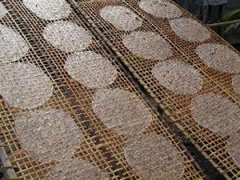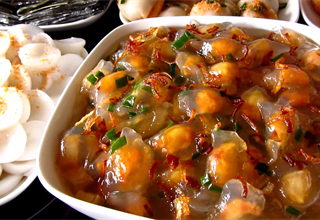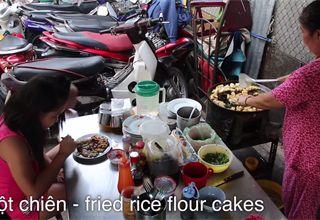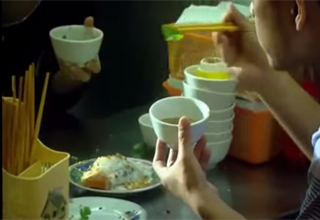In the small village lying along the beautiful Ba River in the southern coastal Phu Yen Province, it was supposed to be a quiet day.
Dong Binh’s renowned rice paper factories were not working at full capacity but still columns of smoke were rising up into the sky and bamboo grids filled with rice paper lined its roads.
The smell of rice flour pervaded the air and armies of trucks carrying rice paper passed in and out of the village.
Local residents don’t know when rice paper was first made here; they only know they learnt the craft of making it from their parents who learnt it from theirs.
But they think it started with one or two households making it to sell during the Lunar New Year, funerals, and death anniversaries before it gradually caught on.
Now, every household in Dong Binh makes rice paper.
Phu Yen people are very proud of the village’s savory white rice paper which has become popular all over the country. It is made from rice grown in Tuy Hoa city and irrigated by the Ba.
Like everything else, making good rice paper requires hard work. The rice must be soaked in water for up to five hours and then ground into flour. A normal work day starts at three in the morning. A wood fire is lit, water is boiled, and flour is kneaded.
Besides rice flour, wheat flour is also used to prevent the rice paper from breaking during transportation or becoming sticky when softened in water for use as a wrap. Two kilograms of wheat flour is added to every 10 kg of rice flour.
When the flour is kneaded, the right amount of water must be added; too little makes the paper thick, and later, when steamed, causes it to cook unevenly. Too much, on the other hand, makes the rice paper brittle.
Once the flour is kneaded, it is rolled into a very thin round on a flat pan and steamed.
This job is mostly done by women since they are considered to be more dexterous and meticulous, essential qualities for making nice, round rice paper.
They work in teams of at least three -- one spreads the flour, another spreads the rice paper over a bamboo grid, and the third carries the grid to dry under the sun and removes the rice paper when dried.
Spreaders are often likened to drivers since their hands never stop working. One hand stirs the flour and the other mixes it or adjusts the heat. Every move has to be quick and precise.
Even drying the rice paper in the sun requires experience -- if it is dried for too long, it will either become brittle and break or bend.
Nature’s blessing
Spreading the rice paper needs nature’s cooperation in the form of sunny weather. Most producers do not work on wet days. If it suddenly starts to rain while the flour is being rolled, the work is halted.
But on sunny days, every household in Dong Binh rolls 30 to 40 kg of rice on average (1kg of rice makes 20 to 25 pieces).
During the Lunar New Year, almost the whole village works through the night to make enough to meet the demand within and outside the province.
At night or when it rains, people use fire to dry the paper.
Dong Binh makes rice paper in various thicknesses, with the thickest being the most expensive. Prices range from VND3,000 for a pack of 10 pieces to VND7,000.
Though every household has its own secrets in mixing the flour and adding ingredients, they all make rice paper that is different from anything else made elsewhere in the country.
Dong Binh rice paper is popular as a wrap to roll up food since when soaked in water it does not stick or melt. It is also added to fried chopped meat and fried shrimp cakes.
It has a slightly tough taste and the fragrance of young rice stalk. If stored in a dry place, it keeps for several months.
In Phu Yen, there is a simple dish locals dearly love and show off to visitors: pork and vegetables wrapped in Dong Binh rice paper.
A few of the papers, a little chopped pork, and fresh vegetables, and a very delicious dish is ready.
Source: TT, Mon Ngon

















COMMENTS